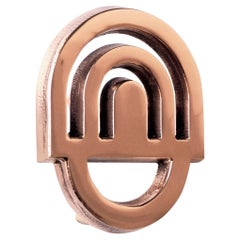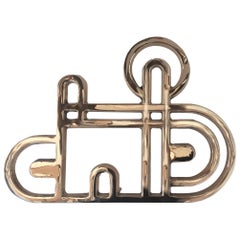Seletti Palace
2010s Italian Post-Modern Blanket Chests
Brass
2010s Italian Post-Modern Blanket Chests
Bronze
2010s Italian Post-Modern Blanket Chests
Bronze
2010s Italian Post-Modern Blanket Chests
Bronze
Recent Sales
2010s Italian Post-Modern Blanket Chests
Bronze
People Also Browsed
Vintage 1960s European Mid-Century Modern Chandeliers and Pendants
Brass
21st Century and Contemporary Brazilian Modern Dining Room Chairs
Wood
Vintage 1950s German Mid-Century Modern Stools
Metal
21st Century and Contemporary Mexican Mid-Century Modern Table Lamps
Wood, Fabric, Linen, Fiberglass
2010s American Flush Mount
Brass
21st Century and Contemporary Italian Modern Coat Racks and Stands
Stainless Steel
2010s Mexican Brutalist Wall-mounted Sculptures
Wood
2010s Mexican Post-Modern Side Tables
Onyx
21st Century and Contemporary Italian Modern Shelves
Resin
2010s Spanish Modern Side Tables
Ceramic, Earthenware, Stoneware
2010s Mexican Modern Desks and Writing Tables
Wood
2010s Bosnian Mid-Century Modern Daybeds
Fabric, Beech, Velvet
2010s American Modern Credenzas
Steel
20th Century Italian Mid-Century Modern Table Lamps
Chrome
Mid-20th Century Italian Mid-Century Modern Ashtrays
Brass
20th Century Mid-Century Modern Lounge Chairs
Walnut, Upholstery
A Close Look at Post-modern Furniture
Postmodern design was a short-lived movement that manifested itself chiefly in Italy and the United States in the early 1980s. The characteristics of vintage postmodern furniture and other postmodern objects and decor for the home included loud-patterned, usually plastic surfaces; strange proportions, vibrant colors and weird angles; and a vague-at-best relationship between form and function.
ORIGINS OF POSTMODERN FURNITURE DESIGN
- Emerges during the 1960s; popularity explodes during the ’80s
- A reaction to prevailing conventions of modernism by mainly American architects
- Architect Robert Venturi critiques modern architecture in his Complexity and Contradiction in Architecture (1966)
- Theorist Charles Jencks, who championed architecture filled with allusions and cultural references, writes The Language of Post-Modern Architecture (1977)
- Italian design collective the Memphis Group, also known as Memphis Milano, meets for the first time (1980)
- Memphis collective debuts more than 50 objects and furnishings at Salone del Milano (1981)
- Interest in style declines, minimalism gains steam
CHARACTERISTICS OF POSTMODERN FURNITURE DESIGN
- Dizzying graphic patterns and an emphasis on loud, off-the-wall colors
- Use of plastic and laminates, glass, metal and marble; lacquered and painted wood
- Unconventional proportions and abundant ornamentation
- Playful nods to Art Deco and Pop art
POSTMODERN FURNITURE DESIGNERS TO KNOW
- Ettore Sottsass
- Robert Venturi
- Alessandro Mendini
- Michele de Lucchi
- Michael Graves
- Nathalie du Pasquier
VINTAGE POSTMODERN FURNITURE ON 1STDIBS
Critics derided postmodern design as a grandstanding bid for attention and nothing of consequence. Decades later, the fact that postmodernism still has the power to provoke thoughts, along with other reactions, proves they were not entirely correct.
Postmodern design began as an architectural critique. Starting in the 1960s, a small cadre of mainly American architects began to argue that modernism, once high-minded and even noble in its goals, had become stale, stagnant and blandly corporate. Later, in Milan, a cohort of creators led by Ettore Sottsass and Alessandro Mendini — a onetime mentor to Sottsass and a key figure in the Italian Radical movement — brought the discussion to bear on design.
Sottsass, an industrial designer, philosopher and provocateur, gathered a core group of young designers into a collective in 1980 they called Memphis. Members of the Memphis Group, which would come to include Martine Bedin, Michael Graves, Marco Zanini, Shiro Kuramata, Michele de Lucchi and Matteo Thun, saw design as a means of communication, and they wanted it to shout. That it did: The first Memphis collection appeared in 1981 in Milan and broke all the modernist taboos, embracing irony, kitsch, wild ornamentation and bad taste.
Memphis works remain icons of postmodernism: the Sottsass Casablanca bookcase, with its leopard-print plastic veneer; de Lucchi’s First chair, which has been described as having the look of an electronics component; Martine Bedin’s Super lamp: a pull-toy puppy on a power-cord leash. Even though it preceded the Memphis Group’s formal launch, Sottsass’s iconic Ultrafragola mirror — in its conspicuously curved plastic shell with radical pops of pink neon — proves striking in any space and embodies many of the collective’s postmodern ideals.
After the initial Memphis show caused an uproar, the postmodern movement within furniture and interior design quickly took off in America. (Memphis fell out of fashion when the Reagan era gave way to cool 1990’s minimalism.) The architect Robert Venturi had by then already begun a series of plywood chairs for Knoll Inc., with beefy, exaggerated silhouettes of traditional styles such as Queen Anne and Chippendale. In 1982, the new firm Swid Powell enlisted a group of top American architects, including Frank Gehry, Richard Meier, Stanley Tigerman and Venturi to create postmodern tableware in silver, ceramic and glass.
On 1stDibs, the vintage postmodern furniture collection includes chairs, coffee tables, sofas, decorative objects, table lamps and more.
Finding the Right Blanket-chests for You
Antique and vintage blanket chests go by many names. You may have heard them called hope chests, dowry chests or Lane cedar chests, with the latter referring to the now-famous case pieces manufactured by the Lane Furniture company.
No matter the name, these were initially large crude wooden boxes with hinged lids where you stowed away your blankets, household linens and possibly some valuables. Everyone can always use a bit more storage in our bedrooms or guest bedrooms, and blanket chests can be a stylish solution to help you stay organized, particularly if you’re short on closet space.
Blanket storage trunks are still typically equipped with hinges on their lids for easy access to their large storage capacity. They’re often rectangular pieces, but in the hands of today’s furniture designers, contemporary blanket chests take on many shapes and are made of varying materials. Most antique blanket chests are made out of wood, from rich mahogany to oak.
Find a wide range of antique, new and vintage blanket chests available for sale on 1stDibs.




